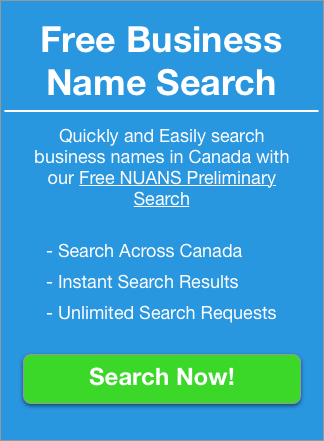11 Tips To Successfully Take Your Business Global

You’re excited about reaching customers globally.
You have solid, scaleable operations in place to meet customer needs in the local, regional or national marketplace.
You have people in positions to make connections and develop partnerships worldwide.
It sounds like you’re ready to take your Canada-based business global.
But what do you need to know about going global?
Take inventory of your strengths and evaluate your strategy as we dive into how to take your business global.
Put Failure in Perspective
Even the biggest and best brands have launched failures in the national and world arenas.
Among them:
- Coca-Cola
- Sony
- Apple
- Netflix
But the one factor that kept a major misstep from bringing their global efforts down is that they didn’t let failure define them.
You may remember their failures. But when we think of these companies today, their failures aren’t the first things that come to mind.
Taking your business global is tough. You can’t know everything.
You will make mistakes, know this going in, but make sure to take a step back to consider your “failures” objectively.
Make note of what you learn, and be a better global business going forward.
Take Action
Taking your business global doesn’t mean launching everywhere at once.
Evaluate each market’s potential. Look for the “quick wins”.
Start moving into the global space one strategic step at a time.
Don’t wait until you’re ready for “world domination”.
Test the reception in smaller global markets. Get to know the customers in that market,
Is this market a winner? It’s time to saturate the marketplace and expand to other markets like it.
Learn more about each new market as your global presence grows.
Rethink Obstacles
If your lungs are never taken to their limits through exercise, lung capacity never increases.
If you don’t learn how to jump hurdles on the practice field, you won’t be able to do it in a competition.
If your path to business success has been all roses and high-profit margins, even a small obstacle can seem insurmountable.
Obstacles make us stronger. They teach us lessons that we must learn to handle what lies ahead.
And oh, yes, you will face them when taking your business global.
Embrace obstacles and figure out how to overcome them.
Then take that knowledge into your future dealings.
Value Strong Leadership
There’s no room for mediocrity when you’re taking your business global.
Evaluate who you have in leadership roles.
What are their strengths and weaknesses?
What do you need to do to help them get to the next level?
Are they leadership material in the first place?
Don’t settle. You can’t afford to settle when taking a business global. You need your best and brightest steering the ship.
And don’t overlook your own leadership shortcomings.
Are you ready to lead your organization into the global marketplace?
What do you need to do to become that leader?
Don’t Overlook The Strength Within
You may be considering hiring leadership outside the company. And yes, you may need to fill key positions with those who’ve helped take a business global in the past.
But be sure to evaluate who you have on the inside. Promote from within when possible.
This not only rewards loyalty. It improves morale and performance of other employees because they see growth potential.
These are the employees who’ve stuck with you through the hard times as you were growing in a local or regional space.
They’ve proved their dedication and skill. They know your business inside and out.
When you expand into a new marketplace you need loyal employees to help you take this to the next level.
Know It Only Gets Harder
Once you’re proved a market concept, your competitors will seek to follow you into the new region.
Feeding like piranha off the momentum that you’ve already created by breaking into a new market, they’ll face fewer challenges and incur less expense.
But don’t let resentment steal your thunder. It’s simply cause and effect.
Stay focused. Competition only makes you stronger.
As first to market, you’ll have many advantages like:
- Established infrastructure
- Connections and partnerships
- Brand recognition
Don’t take any of this for granted. Work it to your advantage. Relegate the competition as the lesser alternative to what you have to offer.
If you are that business entering an already proven marketplace, don’t expect to go in and do exactly what the competition is doing.
They do have the advantages listed above.
You need to be prepared to do it better as you edge in on their market share.
Leverage Technology
When you’re going global you need technology on your side.
Evaluate the technologies that you’re using currently. Are they scalable in the global marketplace?
Do you need to invest in better technology?
The last thing you want to do is move into a new market and have your entire staff trying to learn new and/or untested technology.
But you must have the right technology in place to streamline every process possible, leaving your teams to conquer the global market.
Research technologies in your industry. What are other companies in that market using? What’s working?
Compare them to your current technologies and start investing in training and tech before moving into the new market.
Adapt, Adapt and Adapt Again
Be ready to adapt — a lot.
Foreign government regulations change? Adapt.
Currency value slides against the Canadian dollar? Adapt.
Civil unrest? Adapt.
Unique opportunity in a certain market? Adapt.
It’s all part of going global.
Your risk management team won’t be able to predict and develop a strategy around every eventuality.
You have to be willing to go with the flow, make changes and implement fixes as the unexpected arises.
And if you do have the opportunity to plan, incorporate an effective risk management strategy into your processes.
Value Partnerships
When you’re taking a business global, you don’t want to go it alone. Value your partnerships both domestic and abroad.
Nurture those partnerships. Network.
If you work with a local supplier, talk to them about your global expansion plans. See how you can mutually benefit each other.
Can they improve terms or lower per unit pricing in exchange for larger orders?
Start making connections overseas or over the border.
If you’re not physically in the market, it’s hard to identify certain market trends, be aware of government changes and spot new opportunities.
You need advisors on the inside to capitalize on the market.
These partnerships may include connecting with new vendors, retailers, storage and transportation companies and marketing firms that can minimize costs and increase production in that market.
Utilize Existing Global Platforms
You’ve got a website. It’s great for the Canadian consumer.
But now you’re expanding into Brazil. You know that a site in English won’t reach your target.
You consider installing an API to translate your site to Portuguese automatically for the Brazilian consumer.
But then you find out from a trusted contact in Brazil that the translation looks clunky with lots of errors. It’s not very inspiring and doesn’t look professional.
You’ll have to hire a professional translator to translate the whole site.
Your site appears past page 10 in search engines because your business isn’t optimized for local SEO in Brazil and all of the blogs are in English.
Businesses moving into a new global market face huge hurdles with their websites. They may even need to create a completely different website to get the exposure they experience in their home country.
Because of this, identifying and taking advantage of local online marketplaces is important when you’re breaking into a new market.
These 3rd party sellers will charge a fee, but they already have the traffic to get your products or services seen into that market.
Beyond companies you know like eBay and Amazon, work with your local connections to find out where the locals shop online. And get your products listed there.
While following all site regulations, start funnelling consumers back to your site as you redevelop it for that market.
Evaluate Logistics
How will you get your product to the consumer? That’s all you have to worry about, right? Wrong.
Where will the product be made?
Where do raw materials come from?
How do they get to the factory?
Do you need a warehouse in the local market?
What about retailers?
Are customers willing to pay overseas shipping? Probably not, according to a recent UPS study.
Handling all of the manufacturing in Canada and then shipping it may not make sense logistically, financially or from the customer experience perspective.
Can you produce the same high-quality product within the local market, slashing manufacturing costs, shipping costs and time to delivery to the end consumer?
It may be the smart decision. Or it may not. But you need to evaluate it for yourself.
Conclusion
It’s no small endeavour, but you knew that already.
The key is to learn from others, your mistakes and always improve on how you get things done.
Do you have dreams of taking your business global? It starts with small steps in the right direction.
Check out our free NUANS Preliminary Search to find out about the availability of your business name in the Canada.

